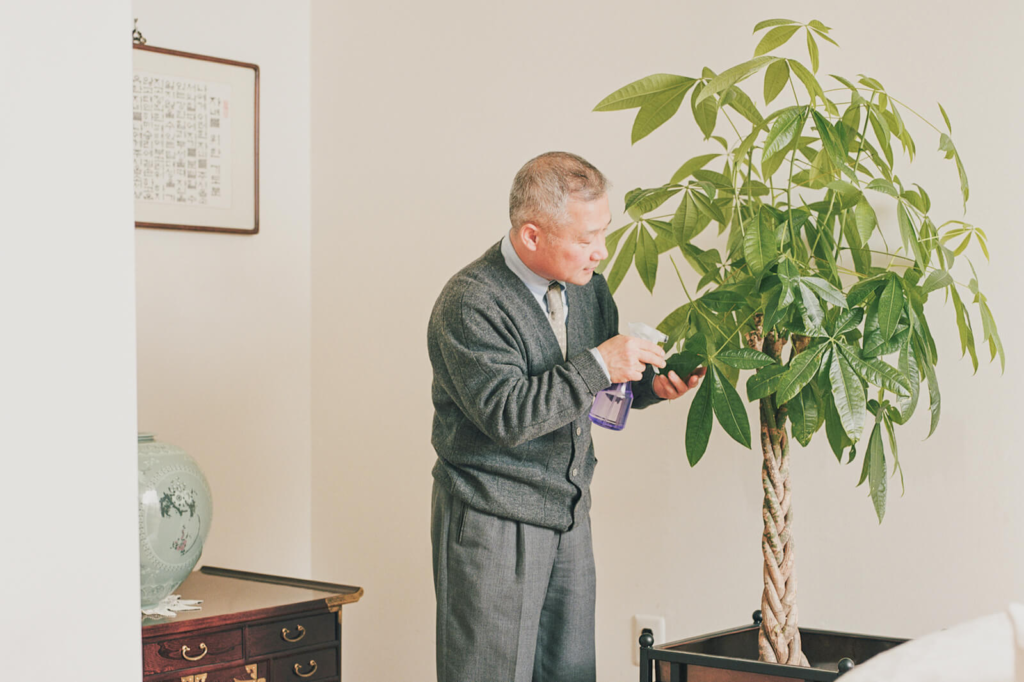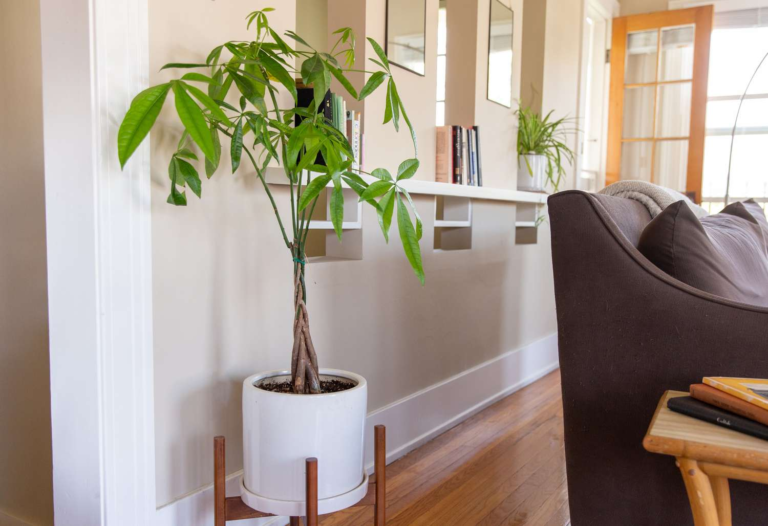In the enchanting world of houseplants, the Money Tree stands as a symbol of nature’s intertwining with fortune. Beyond the whispered tales of prosperity it brings, this lush green beauty embodies resilience, adaptability, and the evergreen spirit of nature within our living spaces. Yet, as with any living entity, it thrives best when understood and cared for appropriately. Dive deep with us into the realms of the Money Tree, as we unravel its mysteries, care essentials, and how to address challenges it might face, ensuring that both its health and the positive energy it radiates are in abundance. Whether you’re a seasoned green thumb or venturing into plant parenthood for the first time, this guide promises to be your compass in nurturing this unique emblem of green luck.
Significance of Money Trees: Beyond Just Luck
While many associate the money tree, scientifically termed Pachira aquatica, with affluence and good fortune, its significance extends beyond mere superstition. Its reputation as a harbinger of prosperity is relatively recent, originating in the 1980s. Surprisingly, the now-iconic braided design was introduced by a Taiwanese truck driver and gained rapid traction among feng shui aficionados across Asia.
The Story Behind the Money Tree’s Name
The term “money tree” is intriguing and catches one’s attention instantly. While the plant is known for bringing prosperity, the name has an interesting anecdote behind it. As the story goes, in ancient times, a poor man prayed for money. He found this peculiar tree, took it home, and discovered that it could grow money. Soon, he became wealthy by selling trees grown from its seeds. Though this is more of a legend than fact, the name signifies hope, fortune, and prosperity.
Essential Care for the Money Tree
The Money Tree, a symbol of prosperity and good luck, demands minimal but specific care to thrive.
- Soil: Money trees prefer well-draining soil. A peat-moss-based mix, combined with perlite or sand, ensures proper drainage, preventing root rot.
- Watering: Though these trees originate from wetlands, they don’t appreciate soggy roots. Water thoroughly, ensuring the soil is moist but not waterlogged. As a rule of thumb, wait until the top 1–2 inches of soil feels dry before watering again.
- Sunlight: Bright, indirect light is ideal. If you have a south-facing window, consider placing your tree a few feet away to avoid harsh direct sunlight. For east or west-facing windows, placing it on the windowsill or close by works.
- Fertilization: During the growing seasons of spring and summer, feed your money tree with a diluted, balanced liquid fertilizer every month. In fall and winter, feeding can be reduced to every other month.
- Repotting: Money trees are relatively slow growers, but they may become root-bound after a few years. If you notice the roots growing through the drainage hole or the water doesn’t seep in when watering, it’s time to repot. Choose a container 1–2 inches larger in diameter than the current one.
Regularly checking and ensuring these essential care aspects can make your money tree flourish and become a centerpiece in your home.
The History and Aesthetics of Braiding Money Trees
It’s not compulsory to braid your money tree. However, commercially available ones often come with braided trunks for aesthetic appeal. Such braids are a result of intertwining multiple saplings during their early growth phase. If you’re inclined to style yours, intertwine the stems gently and secure them with a loose string. You can continue this technique as the tree matures.
Traditionally, the canopy of a money tree is round, but allowing natural growth and pruning only when necessary works equally well. Pruning can also be used to maintain a desired size.
Addressing Common Challenges with Money Trees
Money trees, though relatively low maintenance, can sometimes exhibit problems, reflecting their health or environment. Addressing these common challenges will ensure your plant’s longevity and aesthetic appeal.
- Yellowing of Leaves: Overwatering is often the culprit. Ensure your plant pot has adequate drainage and follows the recommended watering schedule. If your money tree is in a location with too much direct sunlight, its leaves may turn yellow. Shifting it to a spot with indirect sunlight can resolve the issue.
- Dropping Leaves: This could be due to sudden temperature changes, especially if the plant is placed near a drafty window or an air conditioning vent. Ensure a stable environment with temperatures between 65-85°F.
- Pests: Aphids, spider mites, and scales are common pests that can infest money trees. If you notice any bugs or sticky residue on your plant, consider using an insecticidal soap or neem oil as a treatment. Regularly cleaning the leaves can also deter pests.
- Browning of Leaf Tips: Low humidity can cause the tips of your money tree’s leaves to brown. Consider placing a humidifier nearby, or place the plant on a tray filled with pebbles and water to increase surrounding humidity.
Understanding and promptly addressing these challenges can ensure your money tree remains healthy and continues to enhance your space.
Where Should You Purchase Your Money Tree?
When considering the purchase of a money tree, the origin and health of the plant are paramount.
- Local Nurseries: Buying from a reputable local nursery has advantages. You can inspect the plant for health, get advice on care, and support local businesses. Nurseries usually have knowledgeable staff who can provide insights about the plant’s history and best care practices.
- Online Retailers: Several online platforms offer money trees. They can provide a wide variety of sizes and potting options. However, be sure to choose a reputable site. Read reviews, especially about the packing and health of plants upon delivery.
- Garden Centers: Big-box stores often have garden centers attached. They might offer competitive prices, but might lack the specialized knowledge present in dedicated nurseries.
- Specialty Plant Shops: These stores focus on specific types of plants or cater to particular plant care aesthetics. They might have curated, high-quality selections and can offer unique, hard-to-find variants.
- Direct from Growers: Some growers offer direct sales to consumers, especially at local farmer’s markets or plant sales events. Buying direct ensures a fresh plant, and you might get the added advantage of learning about the plant’s growth journey.
When purchasing, check the plant’s leaves for any discoloration or pests, ensure it’s not root-bound, and inquire about its care history. Whether you buy in-person or online, prioritize plant health and choose a seller that offers good post-purchase support.
Cultural Significance of Money Trees Around the World
The money tree holds different meanings across various cultures. In Chinese culture, it’s linked to feng shui, where it’s believed to bring positive energy and balance into spaces. The five leaves typically found on a branch symbolize the five basic elements of feng shui: wood, water, fire, earth, and metal. This emphasizes balance and harmony.
In Western cultures, the money tree is often given as a gift, especially during housewarmings, symbolizing wishes for prosperity and wealth for the homeowner. In many South American regions, it’s more than just a houseplant; it’s a part of their traditional medicines and celebrations.

Comparative Table: Caring for the Money Tree
| Aspect | Money Tree | Snake Plant | Philodendron |
| Native Region | Central/South America | West Africa | Central/South America |
| Light Requirement | Bright, indirect light | Low to bright, indirect | Bright, indirect light |
| Water Frequency | Every 1-2 weeks | Every 2-6 weeks | Every 1-2 weeks |
| Max Indoor Height | 6 feet | 2-4 feet | 3-6 feet |
| Soil Type | Well-draining | Sandy | Peaty |
| Growth Speed | Moderate | Slow | Moderate to Fast |
| Toxicity to Pets | Non-toxic | Toxic | Toxic |
| Humidity Preference | High | Low to Moderate | Moderate |
| Common Pests | Aphids, scales | Spider mites, mealybugs | Aphids, spider mites |
| Special Care Notes | Braiding for aesthetics | Thrives on neglect | Climbing or trailing |
Conclusion
The beauty of indoor plants isn’t just in the aesthetic pleasure they offer, but in the unique care each requires, mirroring the diversity of nature. The Money Tree, with its elegant stature and symbolism of prosperity, stands out as a perfect companion for both novice and seasoned plant enthusiasts. With the right understanding and care, it not only enhances our living spaces but also serves as a testament to nature’s adaptability and resilience. By drawing parallels with other plants, we recognize the varied needs and rewards each brings. So, as you nurture your Money Tree, remember that in every water drop and sunbeam, there lies an opportunity to cultivate luck, growth, and a greener future.
FAQ
1. Why is the Money Tree considered a symbol of luck?
The Money Tree is often linked to the practice of Feng Shui for its five-leaved branch, which symbolizes the five elements of nature. Its intertwined braids also represent interconnectedness and unity.
2. Can I keep my Money Tree in a low-light corner of my house?
While the Money Tree is adaptable to various light conditions, it thrives best in bright, indirect light. A low-light corner might slow its growth and affect its health over time.
3. How often should I repot my Money Tree?
Generally, it’s a good idea to consider repotting every 2–3 years, or if you notice the roots are outgrowing the pot.
4. My Money Tree leaves are turning yellow. What could be the cause?
Yellow leaves can be a sign of overwatering or insufficient drainage. Ensure the pot has adequate drainage holes and reduces the watering frequency.
5. Is the Money Tree safe around pets?
Yes, Money Trees are non-toxic to both cats and dogs. However, it’s always a good practice to place plants out of pets’ reach to prevent any unwanted incidents.
